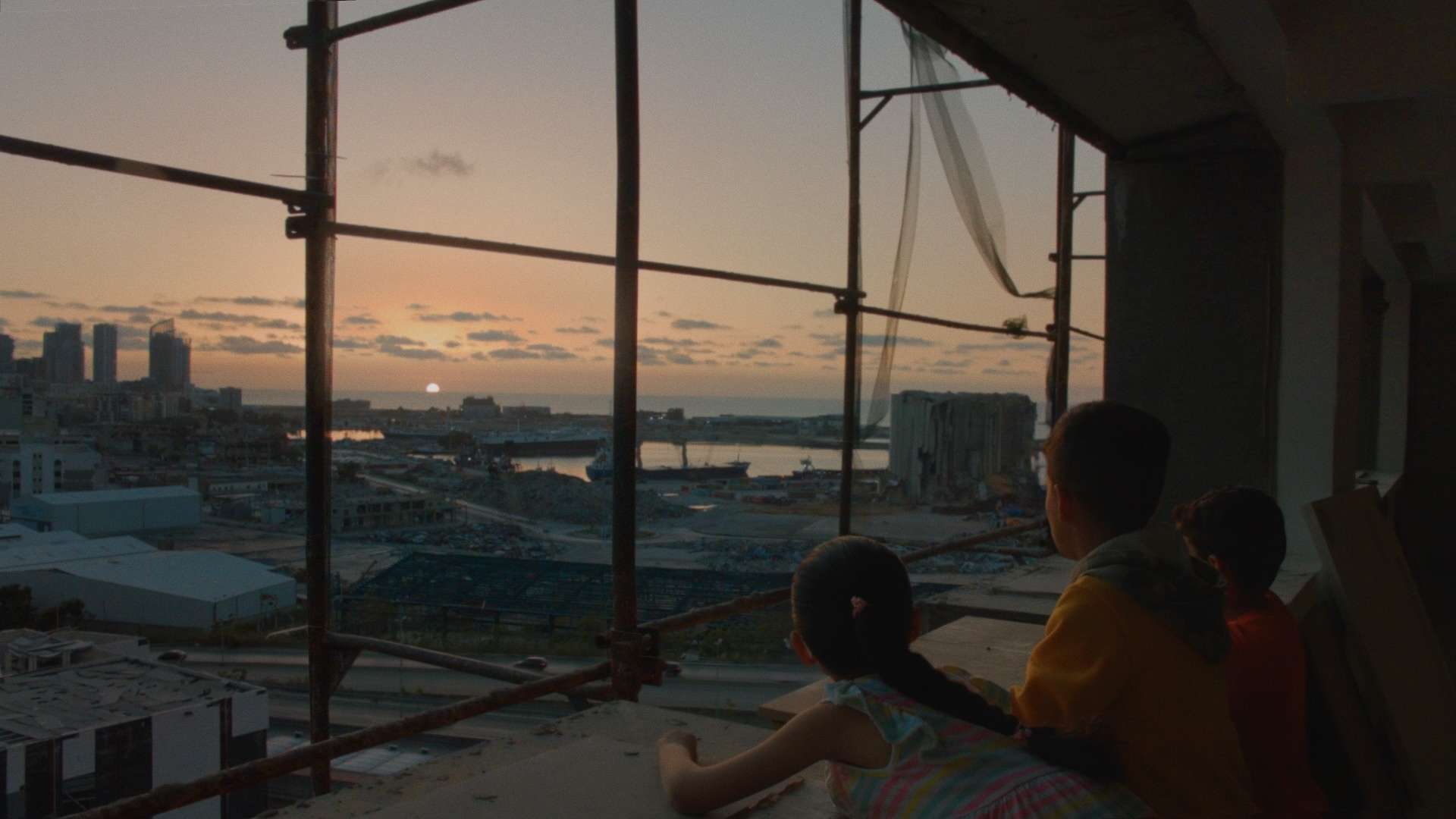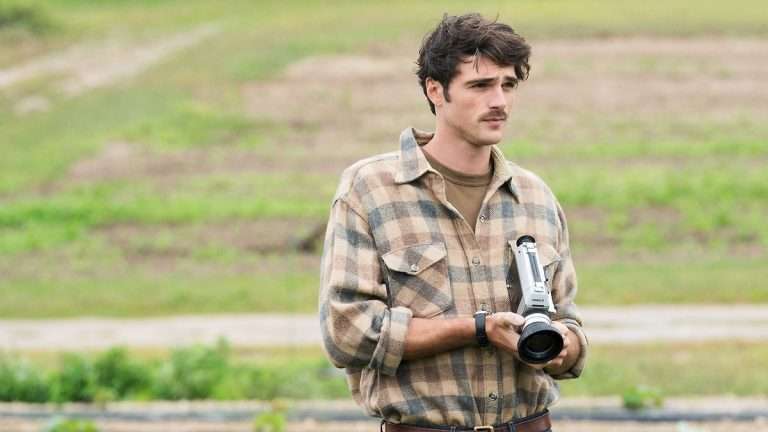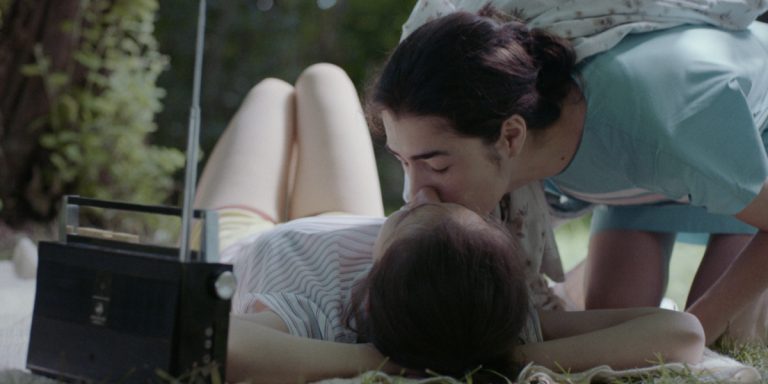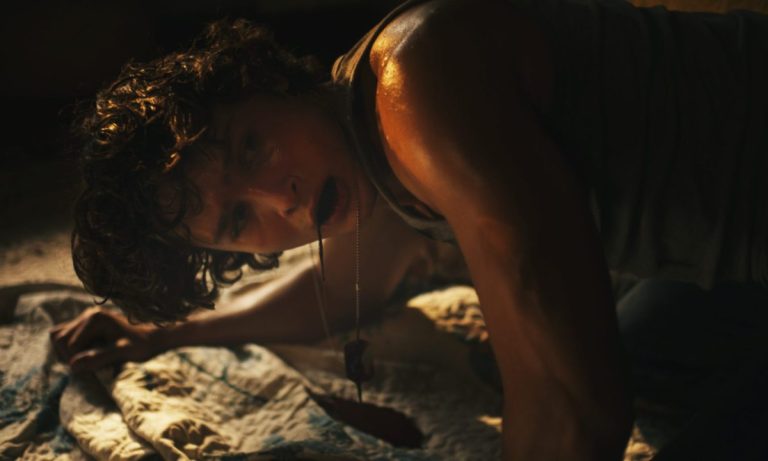The port of Beirut had a deadly ammonium nitrate explosion on August 4, 2020, killing over 200 people and affecting thousands. Nicola von Leffern and Jakob Carl Sauer’s intimate, immensely powerful “To Close Your Eyes and See Fire” swoops over three years following the incident.
The microcosmic storytelling gathers four perspectives. These are individuals across ages and strata. The youngest is the teenage girl Aya, who had witnessed the explosion from a rooftop and since relies on anti-anxiety medication. But the city barely has supplies. There’s the Aladdin family that lost a son; Andrea, a dancer, struggles with grief over her dead father through movement therapy. Finally, there’s the activist Selim, who tries to make sense of the trauma and tragedy he encounters through painting.
How does trauma manifest itself in the long run? Scars can be deeply emotional and entrenched on such a psychological level that one has to confront them and acknowledge that support is needed. Shutting oneself up and being removed from structures of healing will likely exacerbate the crisis. They can start having sway over how one handles future quandaries. Any emotional sanctity may just lie shattered. It’s a difficult process where denial and disavowal cut deep; hiding and holding back can issue great repressions.
One has to articulate and loudly register the gamut of discomfort, grief, and pain. To quell this, it accelerates a larger issue of continued negation. The government has to be pulled to account for all oversights and blunders. People can get divided on these lines. To what point can you persist in complacency and derive comfort from the thought nothing has happened to you yet so you may chuck protests of the ‘other’? This comes alive in a scene as a protestor angrily accosts the car of someone who’d rather stay put in their bubble than interact and throw their weight behind a cause.

The film gazes at a tattered city. Hundreds of families were affected directly and indirectly by the explosion. Scores of immigrants were in the mix of the dead. However, the government has not been held to task as to how the non-nuclear blast could have happened. The degree of negligence and casualness with such dangerous material is shocking. How could things come to such a pass that a disaster on such a scale happened? The episode unraveled with impunity. Public rage demanding action, inquiry, and restitution is what keeps a creaking system wary of what it thinks it can get away with.
The populace is caught in a see-saw. Should they carry on with their lives in a city that increasingly becomes impossible to grapple with? Inflation, unemployment, markets drying out, lack of medicines, and prolonged power cuts are just a few of the vast problems striking not just Beirut but most of Lebanon. Is flight a feasible option? How many people have the resources to build a fresh life on a foreign shore? Getting refugee status, too, comes with its own host of uncertainties. How long can one afford to be kept hanging?
Leffern and Sauer thread together the clashing anxieties of staying and leaving one’s home, which have turned hostile with dignity, empathy, and ache. It’s a brilliantly minute, perceptive emotional concoction, each individual reflecting the layered conflict within citizens of a country rapidly imploding. All four or five central voices foregrounded wrestle with trumping trauma and understanding what shapes resilience, punching back into shape from a situation as horrific as this looks like.
“To Close Your Eyes And See Fire” richly engenders the troubling, knotty relationship with the idea of home as a place of safety, drawing out the chaos and tension embedded in the equation once such a place is rudely exposed as untenable. This is a profoundly urgent, discomfiting exploration of the daily precarity of living, as it is about the messy confusion within fortitude.




![If You Are Happy [2019]: ‘NYAFF’ Review – An Intriguing Existential Thriller Rooted in Reality](https://79468c92.delivery.rocketcdn.me/wp-content/uploads/2019/07/If-You-Are-Happy-highonfilms-768x432.jpg)


![Possessor [2020]: ‘BFI-LFF’ Review – A fine future addition to the realm of cult cinema](https://79468c92.delivery.rocketcdn.me/wp-content/uploads/2020/10/Possesor-1-highonfilms-768x432.jpg)

